Instead of using antibiotics, which bacteria can rapidly evolve resistance to, our goal is to defeat specific pathogens by using the bodies own defence system.
Innate immunity lies at the heart of human disease.
The innate immune system is our body’s first line of defence. When this system senses danger, for example an injury or a pathogen, it responds by initiating inflammation.
Macrophages are key cellular components of innate immunity, with important roles in coordinating inflammatory responses and in destroying invading microorganisms. When their functions are dysregulated, macrophages can trigger inappropriate or excessive inflammation, which is a key driver of many common diseases. The Sweet Group studies the genes and pathways that lead to inappropriate inflammatory responses in macrophages, with the goal of targeting these pathways to develop novel anti-inflammatory therapies. Our recent focus has been on understanding metabolic control of macrophage functions and applying this understanding to inflammation-related diseases such as chronic liver disease.
Macrophages employ an arsenal of weaponry to destroy invading microorganisms, but many important human pathogens can disarm macrophages to establish an infection and cause disease. The Sweet Group also characterizes macrophage antimicrobial responses against bacterial pathogens, so that these pathways can be exploited for the development of new anti-infective agents.
Group leader

Professor Matt Sweet
Group Leader, Innate immunity, infection and inflammation
+61 7 334 62082
m.sweet@imb.uq.edu.au
UQ Experts Profile
- Identification of a targetable molecular switch that turns on glycolysis and associated inflammatory responses in macrophages
- Characterization of mechanisms used by uropathogenic E. coli to evade macrophage-mediated zinc toxicity
- Identification of gene signatures and pathways associated with chronic liver disease severity, as well as validation of a new candidate target for this condition
- Characterization of specific molecular mechanisms that drive both macrophage inflammatory and antimicrobial responses
Innate immunity and inflammation lies at the heart of most human diseases, and thus an understanding of how innate immunity drives dysregulated inflammation can present opportunities for the development of novel anti-inflammatory agents. Our recent studies have identified a cell surface protein and an intracellular enzyme that drive inflammatory responses of macrophages; both of these molecules represent candidate targets for inflammation-related diseases. We are also collaborating with clinicians to identify inflammatory gene signatures associated with progressive liver fibrosis, in order to develop new biomarkers and therapeutics for chronic liver disease. This is a disease that is rapidly increasing in prevalence globally, and for which no approved therapies exist.
Innate immunity also has a central role in protecting against infectious diseases. Many important human pathogens (e.g. Salmonella, Mycobacterium, HIV) reside within macrophages to avoid immune surveillance. By characterizing antimicrobial pathways that clear reservoirs of intracellular pathogens, we may be able to develop novel anti-infective approaches. For example, we recently identified an enzyme that inhibits macrophage antimicrobial pathways, and we showed that inhibiting this enzyme enabled macrophages to more effectively kill intracellular bacteria.
- Mammalian lipid droplets are innate immune hubs integrating cell metabolism and host defense
Marta Bosch, Miguel Sánchez-Álvarez , Alba Fajardo , Ronan Kapetanovic , Bernhard Steiner , Filipe Dutra, Luciana Moreira, Juan Antonio López, Rocío Campo, Montserrat Marí, Frederic Morales-Paytuví, Olivia Tort, Albert Gubern, Rachel M Templin , James E B Curson, Nick Martel, Cristina Català, Francisco Lozano, Francesc Tebar, Carlos Enrich, Jesús Vázquez, Miguel A Del Pozo, Matthew J Sweet, Patricia T Bozza, Steven P Gross, Robert G Parton, Albert Pol. (2020) Mammalian lipid droplets are innate immune hubs integrating cell metabolism and host defense. Science 370: eaay8085. doi: 10.1126/science.aay8085.
Stocks, Claudia J., Pein, Jessica B., Curson, James E.B., Rae, James, Phan, Minh‐Duy, Foo, Darren, Bokil, Nilesh J., Kambe, Taiho, Peters, Kate M., Parton, Robert G., Schembri, Mark A., Kapetanovic, Ronan and Sweet, Matthew J. (2020). Frontline Science: LPS‐inducible SLC30A1 drives human macrophage‐mediated zinc toxicity against intracellular Escherichia coli. Journal of Leukocyte Biology JLB.2HI0420-160R doi: 10.1002/jlb.2hi0420-160r
Journal Article: Class IIa histone deacetylases drive toll-like receptor-inducible glycolysis and macrophage inflammatory responses via pyruvate kinase M2
Das Gupta, Kaustav, Shakespear, Melanie R., Curson, James E.B., Murthy, Ambika M.V., Iyer, Abishek, Hodson, Mark P., Ramnath, Divya, Tillu, Vikas A., von Pein, Jessica B., Reid, Robert C., Tunny, Kathryn, Hohenhaus, Daniel M., Moradi, Shayli Varasteh, Kelly, Gregory M., Kobayashi, Takumi, Gunter, Jennifer H., Stevenson, Alexander J., Xu, Weijun, Luo, Lin, Jones, Alun, Johnston, Wayne A., Blumenthal, Antje, Alexandrov, Kirill, Collins, Brett M., Stow, Jennifer L., Fairlie, David P. and Sweet, Matthew J. (2020). Class IIa histone deacetylases drive toll-like receptor-inducible glycolysis and macrophage inflammatory responses via pyruvate kinase M2. Cell Reports, 30 (8), 2712-2728.e8. doi: 10.1016/j.celrep.2020.02.007
Hyaluronan synthase 2–mediated hyaluronan production mediates Notch1 activation and liver fibrosis
Yang, Yoon Mee, Noureddin, Mazen, Liu, Cheng, Ohashi, Koichiro, Kim, So Yeon, Ramnath, Divya, Powell, Elizabeth E., Sweet, Matthew J., Roh, Yoon Seok, Hsin, I-Fang, Deng, Nan, Liu, Zhenqiu, Liang, Jiurong, Mena, Edward, Shouhed, Daniel, Schwabe, Robert F., Jiang, Dianhua, Lu, Shelly C., Noble, Paul W. and Seki, Ekihiro (2019). Hyaluronan synthase 2–mediated hyaluronan production mediates Notch1 activation and liver fibrosis. Science Translational Medicine, 11 (496) eaat9284, eaat9284. doi: 10.1126/scitranslmed.aat9284
Journal Article: Uropathogenic Escherichia coli employs both evasion and resistance to subvert innate immune-mediated zinc toxicity for dissemination
Stocks, Claudia J., Phan, Minh-Duy, Achard, Maud E. S., Nhu, Nguyen Thi Khanh, Condon, Nicholas D., Gawthorne, Jayde A., Lo, Alvin W., Peters, Kate M., McEwan, Alastair G., Kapetanovic, Ronan, Schembri, Mark A. and Sweet, Matthew J. (2019). Uropathogenic Escherichia coli employs both evasion and resistance to subvert innate immune-mediated zinc toxicity for dissemination. Proceedings of the National Academy of Sciences, 116 (13), 6341-6350. doi: 10.1073/pnas.1820870116
Journal Article: Hepatic expression profiling identifies steatosis-independent and steatosis-driven advanced fibrosis genes
Ramnath, Divya, Irvine, Katharine M., Lukowski, Samuel W., Horsfall, Leigh U., Loh, Zhixuan, Clouston, Andrew D., Patel, Preya J., Fagan, Kevin J., Iyer, Abishek, Lampe, Guy, Stow, Jennifer L., Schroder, Kate, Fairlie, David P., Powell, Joseph E., Powell, Elizabeth E. and Sweet, Matthew J. (2018) Hepatic expression profiling identifies steatosis-independent and steatosis-driven advanced fibrosis genes. JCI Insight, 3 14: . doi:10.1172/jci.insight.120274
Journal Article: Lysine deacetylases and regulated glycolysis in macrophages
Shakespear, Melanie R., Iyer, Abishek, Cheng, Catherine Youting, Das Gupta, Kaustav, Singhal, Amit, Fairlie, David P. and Sweet, Matthew J. (2018) Lysine deacetylases and regulated glycolysis in macrophages. Trends in Immunology, 39 6: 473-488. doi:10.1016/j.it.2018.02.009
Journal Article: SCIMP is a transmembrane non-TIR TLR adaptor that promotes proinflammatory cytokine production from macrophages
Luo, Lin, Bokil, Nilesh J., Wall, Adam A., Kapetanovic, Ronan, Lansdaal, Natalie M., Marceline, Faustine, Burgess, Belinda J., Tong, Samuel J., Guo, Zhong, Alexandrov, Kirill, Ross, Ian L., Hibbs, Margaret L., Stow, Jennifer L. and Sweet, Matthew J. (2017) SCIMP is a transmembrane non-TIR TLR adaptor that promotes proinflammatory cytokine production from macrophages. Nature Communications, 8 14133. doi:10.1038/ncomms14133
Journal Article: Salmonella employs multiple mechanisms to subvert the TLR-inducible zinc-mediated antimicrobial response of human macrophages
Kapetanovic, Ronan, Bokil, Nilesh J., Achard, Maud E. S., Ong, Cheryl-lynn Y, Peters, Kate M., Stocks, Claudia J., Phan, Minh-Duy, Monteleone, Mercedes, Schroder, Kate, Irvine, Katharine M., Saunders, Bernadette M., Walker, Mark J., Stacey, Katryn J., McEwan, Alastair G., Schembri, Mark A. and Sweet, Matthew J. (2016) Salmonella employs multiple mechanisms to subvert the TLR-inducible zinc-mediated antimicrobial response of human macrophages. The FASEB Journal, 30 5: 1901-1912. doi:10.1096/fj.201500061
Journal Article: Strain- and host species-specific inflammasome activation, IL-1β release, and cell death in macrophages infected with uropathogenic Escherichia coli.
Schaale, K., Peters, K. M., Murthy, A. M., Fritzsche, A. K., Phan, M.-D., Totsika, M., Robertson, A. A. B., Nichols, K. B., Cooper, M. A., Stacey, K. J., Ulett, G. C., Schroder, K., Schembri, M. A. and Sweet, M. J. (2016) Strain- and host species-specific inflammasome activation, IL-1β release, and cell death in macrophages infected with uropathogenic Escherichia coli.. Mucosal Immunology, 9 1: 124-136. doi:10.1038/mi.2015.44
Journal Article: Rab8a interacts directly with PI3Kγ to modulate TLR4-driven PI3K and mTOR signalling
Luo, Lin, Wall, Adam A., Yeo, Jeremy C., Condon, Nicholas D., Norwood, Suzanne J., Schoenwaelder, Simone, Chen, Kaiwen W., Jackson, Shaun, Jenkins, Brendan J., Hartland, Elizabeth L., Schroder, Kate, Collins, Brett M., Sweet, Matthew J. and Stow, Jennifer L. (2014) Rab8a interacts directly with PI3Kγ to modulate TLR4-driven PI3K and mTOR signalling. Nature Communications, 5 1: 4407.1-4407.13. doi:10.1038/ncomms5407
Journal Article: Histone deacetylase 7 promotes Toll-like Receptor 4-dependent pro-inflammatory gene expression in macrophages
Shakespear, Melanie R., Hohenhaus, Daniel M., Kelly, Greg M., Kamal, Nabilah A., Gupta, Praveer, Labzin, Larisa I., Schroder, Kate, Garceau, Valerie, Barbero, Sheila, Iyer, Abishek, Hume, David A., Reid, Robert C., Irvine, Katharine M., Fairlie, David P. and Sweet, Matthew J. (2013) Histone deacetylase 7 promotes Toll-like Receptor 4-dependent pro-inflammatory gene expression in macrophages. Journal of Biological Chemistry, 288 35: 25362-25374. doi:10.1074/jbc.M113.496281
Journal Article: Conservation and divergence in Toll-like receptor 4-regulated gene expression in primary human versus mouse macrophages
Schroder, Kate, Irvine, Katharine M., Taylor, Martin S., Bokil, Nilesh J., Le Cao, Kim-Anh, Masterman, Kelly-Anne, Labzin, Larisa I., Semple, Colin A., Kapetanovic, Ronan, Fairbairn, Lynsey, Akalin, Altuna, Faulkner, Geoffrey J., Baillie, John Kenneth, Gongora, Milena, Daub, Carsten O., Kawaji, Hideya, McLachlan, Geoffrey J., Goldman, Nick, Grimmond, Sean M., Carninci, Piero, Suzuki, Harukazu, Hayashizaki, Yoshihide, Lenhard, Boris, Hume, David A. and Sweet, Matthew J. (2012) Conservation and divergence in Toll-like receptor 4-regulated gene expression in primary human versus mouse macrophages. Proceedings of the National Academy of Sciences of the USA, 109 16: E944-E953. doi:10.1073/pnas.1110156109
Journal Article: HIN-200 proteins regulate caspase activation in response to foreign cytoplasmic DNA
Roberts, Tara L., Idris, Adi, Dunn, Jasmyn A., Kelly, Greg M., Burnton, Carol M., Hodgson, Samantha, Hardy, Lani. L., Garceau, Valerie, Sweet, Matthew J., Ross, Ian L., Hume, David A. and Stacey, Katryn J. (2009) HIN-200 proteins regulate caspase activation in response to foreign cytoplasmic DNA. Science, 323 5917: 1057-1060. doi:10.1126/science.1169841
Sweet, Matthew J., Campbell, Carol C., Sester, David P., Xu, Damo, McDonald, Rebecca C., Stacey, Katryn J., Hume, David A. and Liew, Foo Y. (2002) Colony-stimulating factor-1 suppresses responses to CpG DNA and expression of toll-like receptor 9 but enhances responses to lipopolysaccharide in murine macrophages. Journal of Immunology, 168 1: 392-399. doi:10.4049/jimmunol.168.1.392
Journal Article: A novel pathway regulating lipopolysaccharide-induced shock by ST2/T1 via inhibition of toll-like receptor 4 expression
Sweet, M. J., Leung, B. P., Kang, D. W., Sogaard, M., Schulz, K., Trajkovic, V., Campbell, C. C., Xu, D. M. and Liew, F. Y. (2001) A novel pathway regulating lipopolysaccharide-induced shock by ST2/T1 via inhibition of toll-like receptor 4 expression. Journal of Immunology, 166 11: 6633-6639. doi:10.4049/jimmunol.166.11.6633
Journal Article: Macrophages ingest and are activated by bacterial DNA
Stacey, K. J., Sweet, M. J. and Hume, D. A. (1996) Macrophages ingest and are activated by bacterial DNA. Journal of Immunology, 157 5: 2116-2122.
My group collaborates with academics, clinicians and industry to generate knowledge advances in the biomedical sciences and to identify opportunities to understand, diagnose and/or treat immune-regulated disease.
We are also collaborating with clinicians to identify inflammatory gene signatures associated with progressive liver fibrosis, in order to develop new biomarkers and therapeutics for chronic liver disease.
This is a disease that is rapidly increasing in prevalence globally, and for which no approved therapies exist.
Chronic liver disease:
Elizabeth Powell, clinician scientist (PA Hospital):
https://metrosouth.health.qld.gov.au/files/chronic-liver-disease-elizabeth-powell
Kate Irvine, biomedical scientist (Mater UQ):
https://www.materresearch.org.au/Researchers/Our-researchers/researcher?r=1625
Ekihiro Seki, biomedical scientist (Cedars Sinai, LA, USA):
CSL Ltd:
TARGETING MAMMALIAN HDACs AS AN ANTI-INFECTIVE STRATEGY
We have found that specific HDAC enzymes constrain macrophage antimicrobial responses, particularly TLR-inducible mitochondrial fission. This project will explore the specific molecular mechanisms by which HDACs constrain macrophage antimicrobial pathways and will investigate novel anti-infective approaches that target HDAC enzymes.
TARGETING TLR SIGNALLING PATHWAYS AS AN ANTI-INFLAMMATORY STRATEGY
Projects are available to investigate different aspects of TLR-inducible inflammatory pathways in macrophages, for example the role of a novel TLR adaptor in macrophage inflammatory responses and HDAC-mediated control of metabolic pathways in macrophage-mediated inflammation.
CHARACTERIZING ZINC POISONING AS AN ANTIMICROBIAL WEAPON
Innate immune cells deliver toxic levels of zinc to invading microorganisms as an antimicrobial strategy, with zinc-sensitive mutants of a number of pathogens compromised for defence against innate immune cells. This project will focus on the cellular and molecular mechanisms involved in initiation of this host defence pathway.
ORGANELLE-MEDIATED CONTROL OF INNATE IMMUNITY
In addition to controlling energy production, mitochondria are key regulators of macrophage inflammatory and antimicrobial responses. Lipid droplets, which interact with and regulate mitochondria, have also been linked to specific innate immune functions. This project will explore the control of macrophage inflammatory and antimicrobial responses by mitochondria and lipid droplets.
CIRCADIAN CONTROL OF INNATE IMMUNITY
The circadian clock is a conserved gene regulatory network that synchronizes physiological processes with daily fluctuations in sleep/wake cycles. The circadian clock is also an important regulator of immune responses to infection, and this project would explore the mechanisms by which circadian rhythm influences innate immune inflammatory and antimicrobial responses.
Our approach
An understanding of the molecular processes that control the many functions of macrophages can provide fundamental insights into disease processes.
We have identified cellular pathways that prevent macrophages from killing some human pathogens, and we are now exploring ways to manipulate the innate immune system to unleash its power to conquer infectious diseases.
Instead of using antibiotics, which bacteria can rapidly evolve resistance to, our goal is to defeat specific pathogens by using the bodies own defence system.
Innate immunity is a system of incredible influence. If we can understand how this system works, then we can learn how to harness its power to kill infectious agents, and to halt disease-causing inflammation.
Research areas
Innate immunity provides front line defence against infection, so all infectious agents must be able to overcome the innate immune system to colonise the host and cause disease. We study microorganisms that cause urinary tract infections (uropathogenic E. coli), gastrointestinal disease (Salmonella) and sepsis, with these bacterial pathogens also frequently being resistant to antibiotics. Our goals are to develop approaches to boost innate immune pathways as an anti-infective strategy, for example by enhancing macrophage antimicrobial responses.
Innate immune cells such as macrophages also drive inflammation and pathology in numerous acute and chronic disease, including chronic liver disease, inflammatory bowel disease, sepsis and many other conditions.In this context, our goals are to develop novel approaches to suppress innate immune inflammatory responses, for example by manipulating metabolic pathways in macrophages.
General enquiries
+61 7 3346 2222
imb@imb.uq.edu.au
Media enquiries
IMB fully supports UQ's Reconciliation Action Plan and is implementing actions within our institute.
Support us
Donate to research
100% of donations go to the cause





